As Mother Bethel burial ground gets historical marker, community reflects on those forgotten
The site, which lies beneath Weccacoe Playground in South Philadelphia, is considered one of the first independent cemeteries for free African Americans.
-
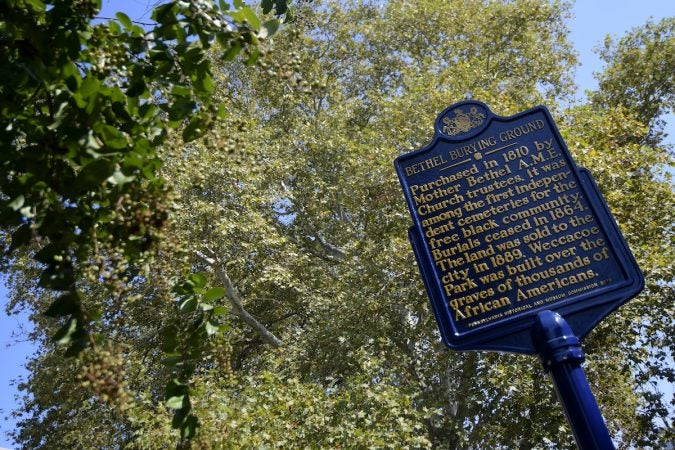
An official Pennsylvania historical marker is unveiled at the Bethel Burying Ground, located under the site of Weccacoe Playground, in Queen Village, on Tuesday. (Bastiaan Slabbers for WHYY)
-
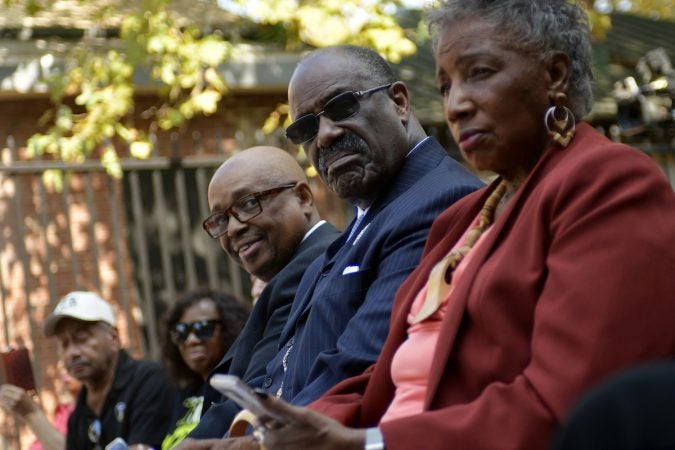
An official Pennsylvania historical marker is unveiled at the Bethel Burying Ground, located under the site of Weccacoe Playground, in Queen Village, on Tuesday. (Bastiaan Slabbers for WHYY)
-

An official Pennsylvania historical marker is unveiled at the Bethel Burying Ground, located under the site of Weccacoe Playground, in Queen Village, on Tuesday. (Bastiaan Slabbers for WHYY)
-
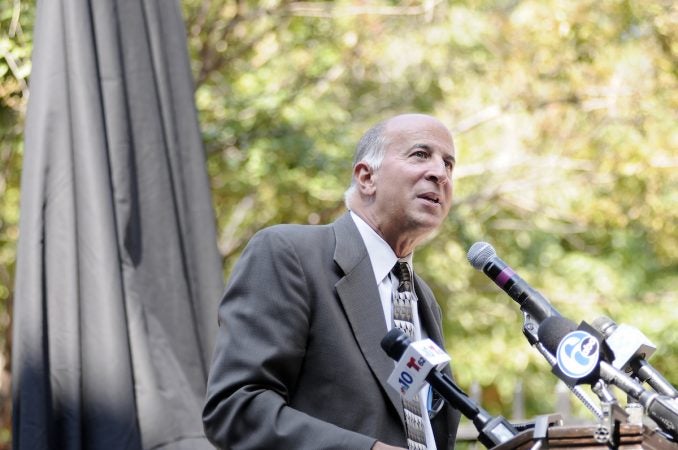
Councilmember Mark Squilla speaks ahead of the unveiling of a state historical marker at the Mother Bethel AME Burying Ground, in Queen Village, on Tuesday. (Bastiaan Slabbers for WHYY)
-
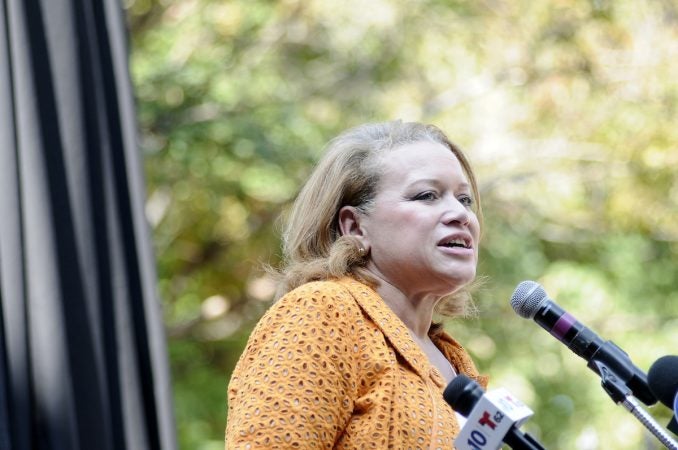
Stephanie Gilbert speaks ahead of the unveiling of a state historical marker at the Mother Bethel AME Burying Grounds, in Queen Village, on Tuesday. (Bastiaan Slabbers for WHYY)
-

Rev. Mark Tyler of Mother Bether A.M.E. Church speaks ahead of the unveiling of a state historical marker at the Mother Bethel AME Burying Ground, in Queen Village, on Tuesday. (Bastiaan Slabbers for WHYY)
-
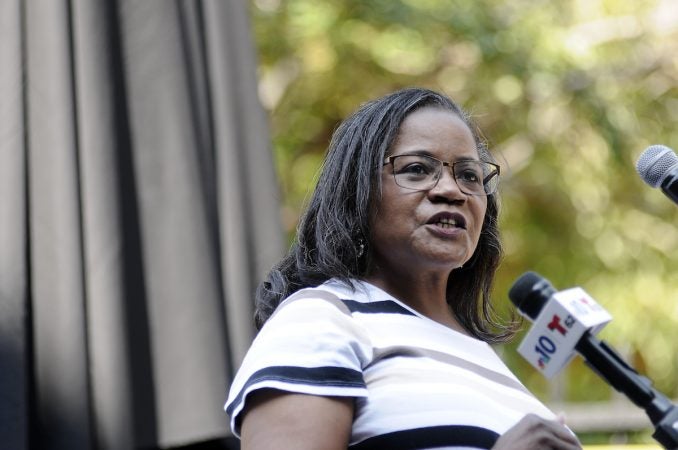
Ophelia Chambliss of the Pennsylvania Historical Museum Commission speaks ahead of the unveiling of a historical marker at the Mother Bethel AME Burying Ground in Queen Village. (Bastiaan Slabbers for WHYY)
-
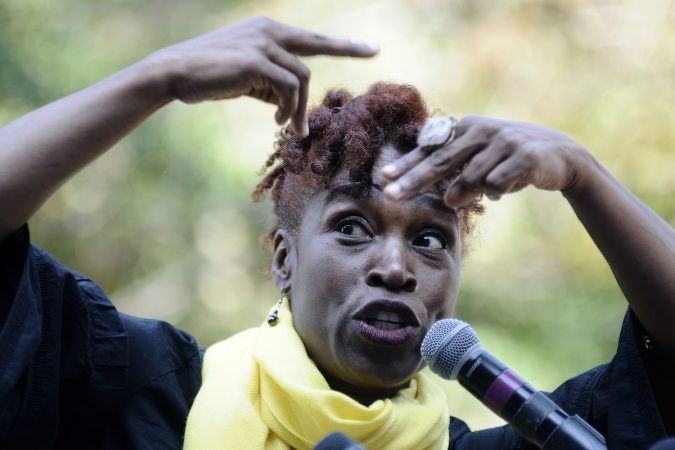
Valerie Gay of the EVER Ensemble performs ahead of the unveiling of a state historical marker at the Mother Bethel AME Burying Ground, in Queen Village, on Tuesday. (Bastiaan Slabbers for WHYY)
-
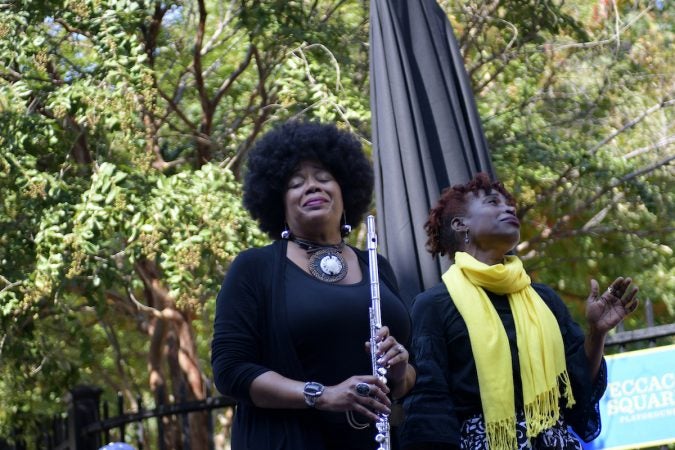
Ruth Naomi Floyd and Valerie Gay perform ahead of the unveiling of a state historical marker at the Mother Bethel AME Burying Grounds in 2019. (Bastiaan Slabbers for WHYY)
-

Mayor Jim Kenney speaks at the unveiling of a historical marker for the Mother Bethel AME Burying Grounds. (Bastiaan Slabbers for WHYY)
-
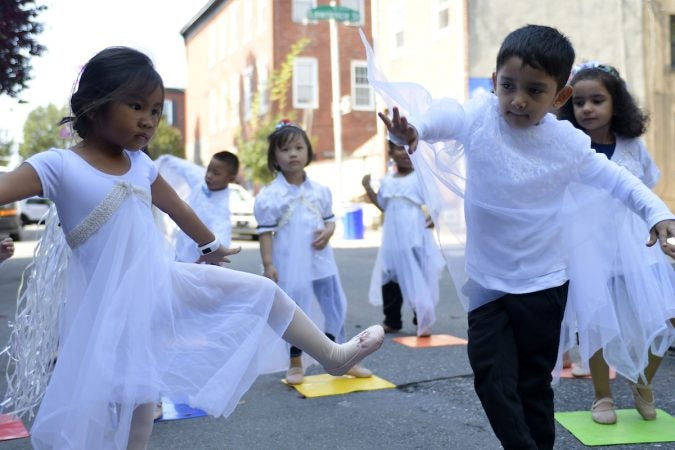
Students of the Settlement Music School perform at the unveiling of a historical marker for the Mother Bethel AME Burying Ground. (Bastiaan Slabbers for WHYY)
-
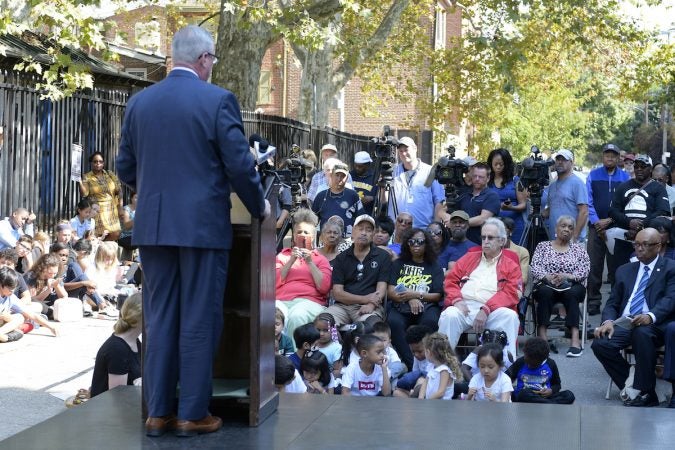
Mayor Jim Kenney speaks at the unveiling of a historical marker for the Mother Bethel AME Burying Grounds. (Bastiaan Slabbers for WHYY)
-
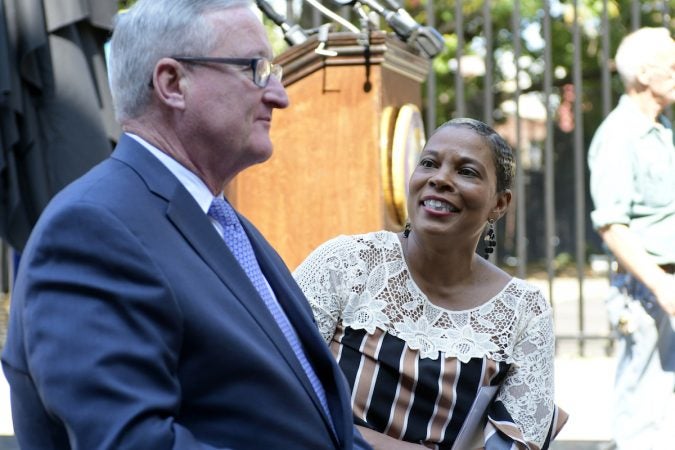
Mayor Jim Kenney and the city's Chief Cultural Officer Kelly Lee at the unveiling of a historical marker for the Mother Bethel AME Burying Ground. (Bastiaan Slabbers for WHYY)
-
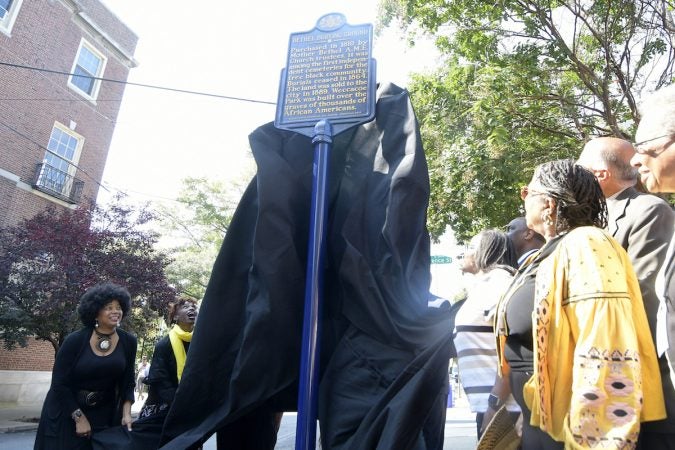
Officials and community leaders unveil the state historical marker for the Mother Bethel AME Burying Ground. (Bastiaan Slabbers for WHYY)
-
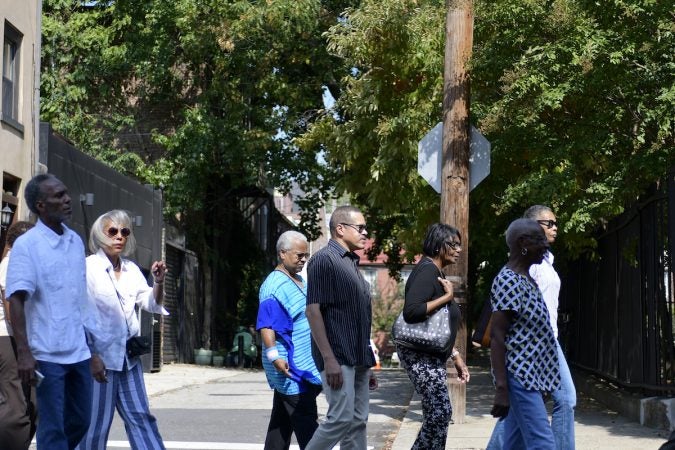
Mother Bethel A.M.E. Church members arrive at the unveiling of a historical marker for the Mother Bethel AME Burying Ground. (Bastiaan Slabbers for WHYY)
As Mother Bethel AME’s pastor, Rev. Mark Tyler, and the church’s members made their way to Weccacoe Playground on Tuesday, he thought it was important to reflect and retrace the steps that the 19th-century congregation took while escorting their families to their final resting place.
Weccacoe Playground, near Fourth and Catharine streets in Queen Village, was built on top of the Mother Bethel Burying Ground, where roughly 5,000 African-Americans were laid to rest. The land was originally purchased by the church in 1810, and burials ceased in 1864. Twenty-five years later, the land was sold to the city to build a playground.
“As we walked and talked, in my mind I imagined pastors who would hold the hands of widows and orphans … and thought about how intense it got as they got closer to the actual burial ground … where they would have to say their final farewells,” Tyler said en route to the unveiling of a Pennsylvania historical marker at the entryway to the burial ground at Queen and Lawrence streets.
The Bethel Burying Ground is considered one of the country’s first independent cemeteries for free African-Americans. Back in the 1800s, the land was outside the city limits — in an area called Southwark — because African-Americans were not allowed to bury their loved ones in cemeteries in Philadelphia at the time.
As they walked, Tyler said he couldn’t help but think of the reasons why the Bethel burial ground was lost in history, the reason why Mother Bethel trustees decided to sell the property 130 years ago: so they could afford a $10,000 down payment to build the edifice that now stands near Sixth and Lombard streets.
“They were stuck with the very important choice … do we fight to preserve and keep the past, or do we fight to preserve the future?” Tyler told the crowd of more than 100 people at the unveiling. “What an awful place to be as a pastor, as a trustee, as a member, to have to vote to sell your burial ground to care for your present and your future.”
For Tyler, it was important to reflect on the economic wealth gap that existed between black and white Americans in Philadelphia in the late 19th century, and the one that still exists today. It’s something he hopes is a continued thought in the creation of a public art memorial that will go up in the park about a year from now.
“If we come here today and all we do is lift up a sign and reveal where folk lay, without dealing with the issues that put them here and that continue to plague us today, we do nothing more than honor with our lips and lip service,” he said.
In 2013, the burial ground was placed on the city’s Register of Historic Places, followed in 2016 by a recognition on the National Register of Historic Places.
The historical marker is a project of the city’s Office of Arts, Culture, and the Creative Economy. The city’s chief cultural officer, Kelly Lee, has worked closely with the Bethel Burying Ground Historic Site Memorial Committee, which has been tasked with developing the public art piece that will remember the 5,000 interred beneath the playground.
The committee, which began meeting last year, is inching closer to prospects for this public art piece. On Wednesday, it will host a community engagement session for artists, to give the site’s history and advice on the feelings the work should evoke.
The playground’s recreation building will be demolished to make room for the memorial.
Lee said the committee hopes to release an official call for artists’ designs by the end of October, with the hope for a groundbreaking by this time next year — 210 years after Mother Bethel founder’s, Rev. Richard Allen, purchased the land for burials.
Karen Warrington, a member of the burial ground memorial committee, was formerly the communications director for former U.S. Rep. Bob Brady. The burial ground site fell within his district back in 2013, when archaeologists confirmed that there were 5,000 people below the park’s surface.
In her work on the committee, Warrington said, she thinks about the stories of the people buried below Weccacoe. She thinks of the stories of people like Ignatius Beck, who helped build the Capitol building in Washington while he was enslaved.
Beck was freed in the early 1800s and made his way north to Philadelphia. That story feels personal to Warrington.
“My grandmother came to Philadelphia in the late 1800s, and so when I’m here and I hear these stories, I understand that this is the story of my family, of the families of my extended community, and it’s important that those stories are being told,” she said.
It’s important for the burial ground memorial to show black Americans’ determination, tenacity, and pride, Warrington said.
“So often in American history, when we show black people coming out of slavery and early Jim Crow, they are so downtrodden,” she said. “What I know of black people is a willingness to function in a system that denied their existence.”
“They weren’t even allowed to be buried within city limits, but this church was able to bury them hopefully with respect, and the memorial should show the respect for those people,” Warrington said.
But more than anything, she hopes the memorial will make her grandmother who lived in 19th-century Philly proud.
WHYY is your source for fact-based, in-depth journalism and information. As a nonprofit organization, we rely on financial support from readers like you. Please give today.







